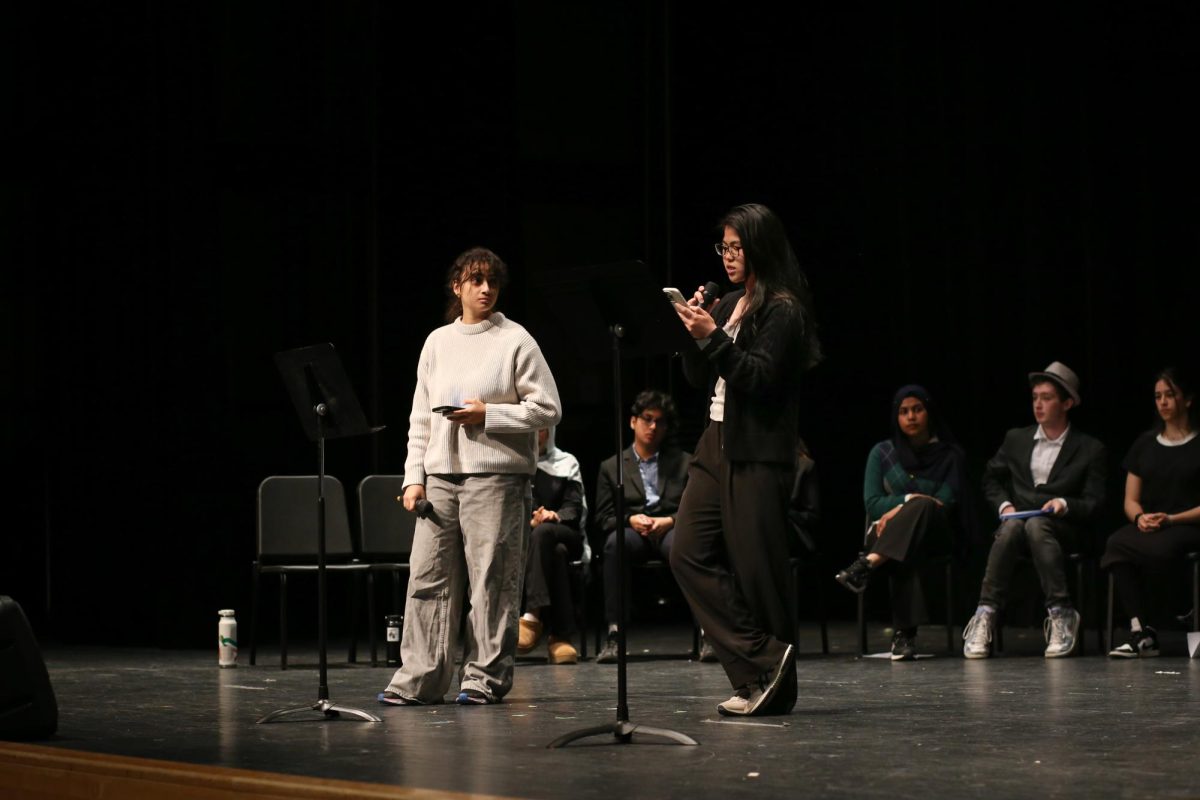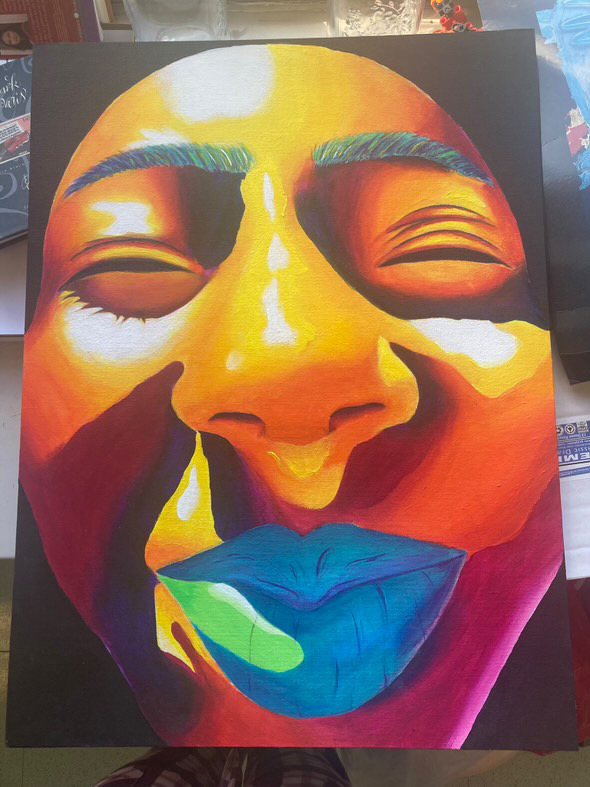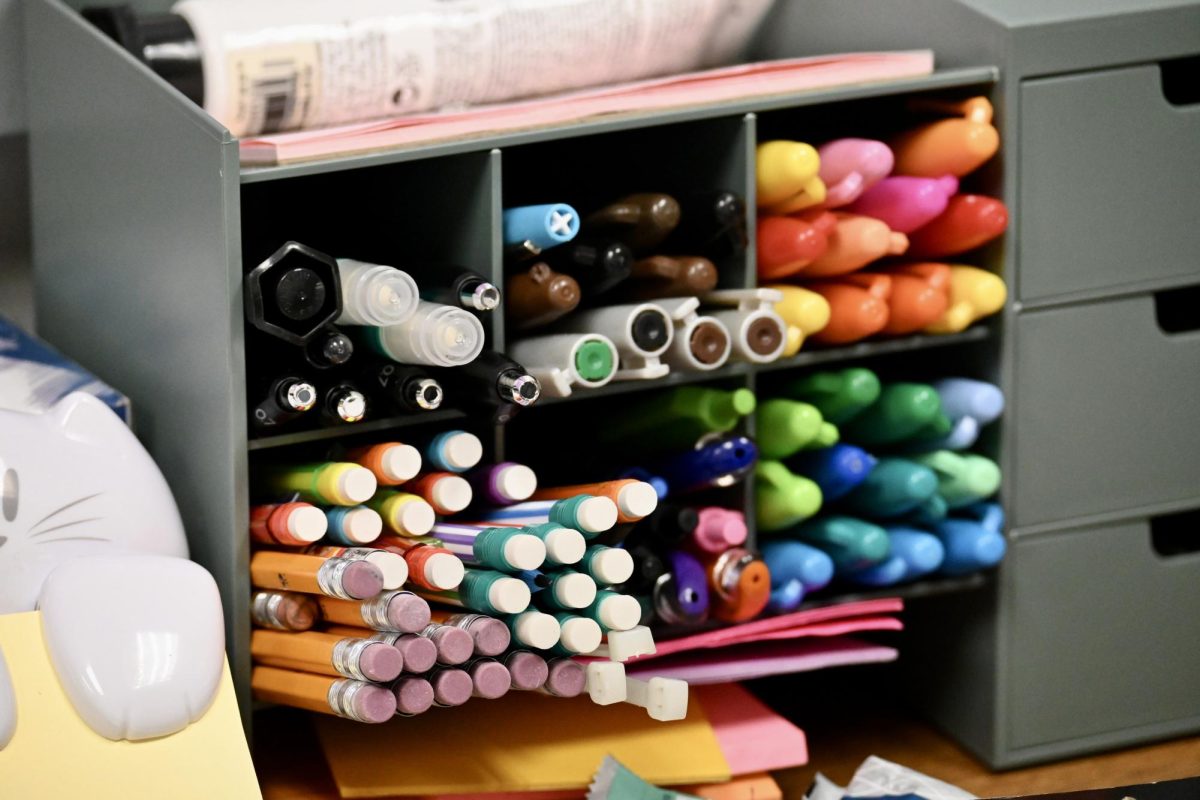
If you were to look into the notebooks of many Harrisities, you would see handwriting of nearly every style: some letters narrow and pointed, others rounded and sprawling across the page. For some students, cursive is the preferred method, but for others, it’s seen simply as messy, sloppy, and completely useless. Throughout the school, students (and teachers) differ on their own style of writing.
Freshman Sharon Ju says that she learned how to write in cursive in fifth grade and struggled with her teacher’s requirement that students should always write that way in class. “I struggled with reading my notes because my cursive was so mess,” she explained. Once elementary school was over, she said that she no longer wrote in cursive and has forgotten this style of writing altogether.
Thomas Chu, a sophomore, learned the art of cursive writing in third grade, but he rarely uses it. He discussed how he had never had a teacher who made him write in cursive and when given the choice, he prefers to write in print.
Similarly, junior Thomas Wong also learned how to write in cursive in elementary school. However, he explains that his writing is illegible. Though a teacher from sophomore year suggested the idea of cursive writing to the class, he states that he never did so because his cursive is difficult to understand.
Like several other Harrisites, Senior Jan Pazhayampallil was taught cursive in elementary school. Furthermore, she had a teacher who forced her to write in cursive in third grade. When given the choice, she chooses to write in print because she “didn’t like being forced to write in cursive, so [she has] always disliked it.”
Some students, though not cursive writers themselves, can see the benefit in knowing the style of writing. Smriti Vaidya, a junior, prefers to write in print, as she doesn’t believe her cursive handwriting is neat. She explains that cursive is important to know, as it is “helpful when taking notes” or to “sign documents.” She understands it as matter of preference.
Unlike most students, freshman Jonathan Kao frequently writes in cursive. He learned it in third grade, and even though he has never been forced to use the style, he prefers to write in cursive because he “can write in a more efficient and neat manner.”
Like Jonathan, fellow freshman Danny Hong always writes in cursive. “In my middle school, all my teachers forced their students to write in cursive,” he says. He continues, “I’m not sure what their reason was for doing this, but I think that they believed that someone who is able to write in cursive would make them seem more professional to others in the future or perhaps help them get a job. Generally speaking, they thought that cursive writing was a very unique and useful skill.” He writes in cursive because he thinks that it helps him finished his assignments faster. He explains that “although it may look a little sloppy, as long as it is legible for my teachers to read, I would definitely use it.”
Shamilah Faria, a senior, prefers to write in cursive as well because she finds it prettier, but she would rather read in print. She says she learned to write in cursive in the third grade and only had cursive “class” at the end of the day. Although her teacher didn’t require her to write in cursive every day, she admired her teacher’s handwriting and “always aspired to have penmanship like hers.” She states that cursive is quite helpful, especially when she is rushing to finish a test, as writing in cursive can be faster than print. Shamilah believes that “technology is definitely ruining the aesthetic quality of cursive and print,” but she doesn’t think it will “ever go so far as to make handwriting completely obsolete, because written language has always been a cornerstone of civilization.”
Language teacher Paola Sierra loves writing in cursive. She feels that it appears refined and smooth and will often write in cursive during class. Ms. Sierra was taught cursive in elementary school and recalls that one of her teachers made her write in cursive for certain tests. She adds, “I used to write the letter R in a way that they looked like an I, and I remember getting points off on a test because my teacher said that she could not read that letter.”
Science teacher Katherine Cooper states that she normally doesn’t “want to write in cursive, but [has] the ability.” She admits that “more often than not [her] notes are in cursive” and uses the style of writing “all the time.” Ms. Cooper also adds that she handwriting notes in general is important, as people “learn when they write” and by failing to practice cursive or print, they are “losing one of the learning opportunities” as a student.
On the other hand, not everyone is fortunate enough to have been taught cursive writing in the first place. This includes freshman Victoria Harris. She feels that cursive looks nice and sophisticated, and regrets never learning how to write it. “In third grade, only one class learned how to write in cursive, and unfortunately, that was not my class,” she explains.
Evidently, Harrisites have different perspectives on cursive writing, but most seem to agree on one idea: it’s all a matter of preference. Whether you write in cursive all the time, or find it extremely difficult to comprehend, what matters most is the ability to write clearly and efficiently. For some students, cursive writing can allow them to write more quickly and help them succeed in and outside the classroom. Even though everyone may have different stances on the concept, it is important to remember that cursive writing is always an available option.


























